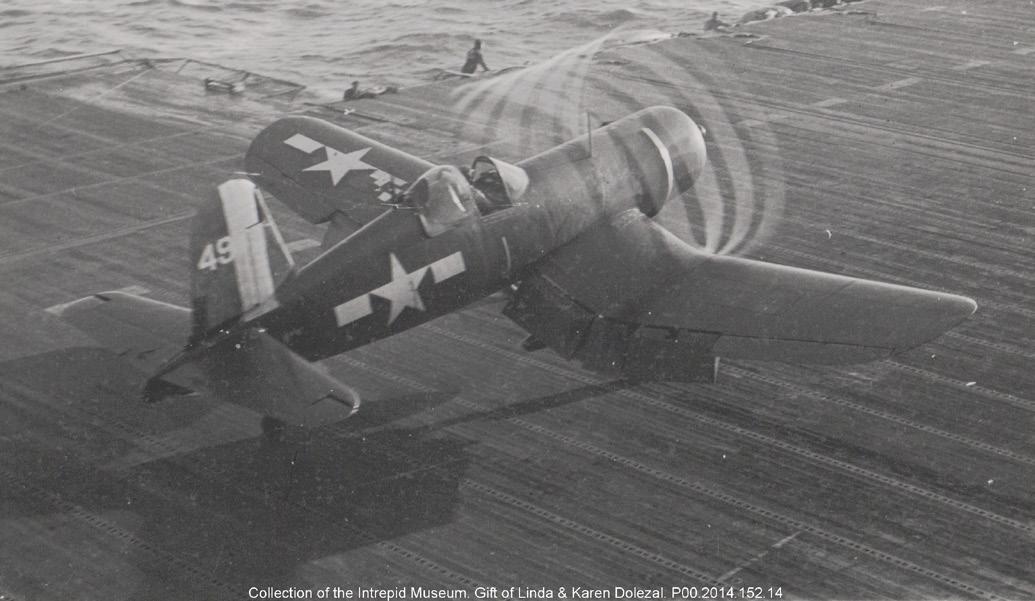




Winter 2025

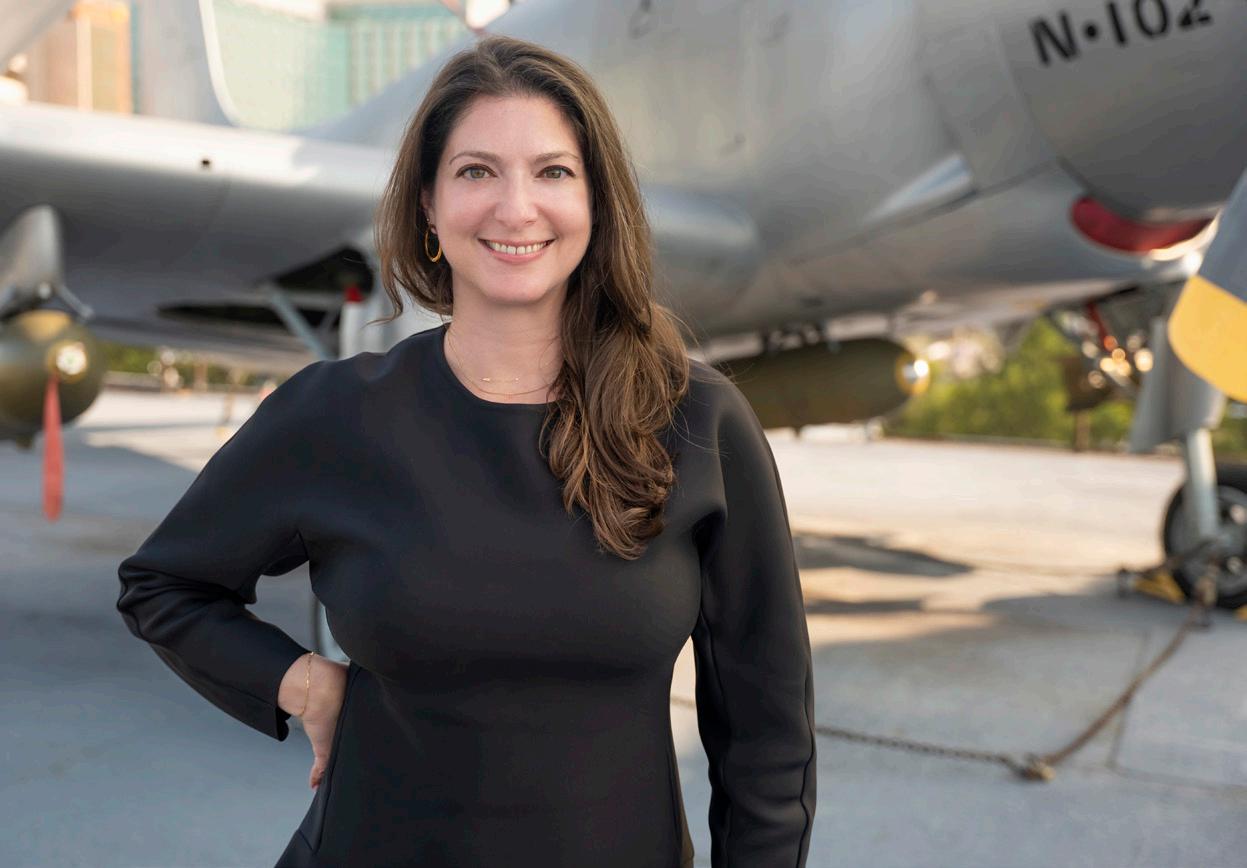

Alexis Marion, the Intrepid Museum’s longtime Vice President of Institutional Advancement, tragically and unexpectedly passed away in August.
Her contributions and impact to the Museum are immeasurable and the relationships she cultivated along the way have been priceless. While annually leading our Salute to Freedom gala, in 2022 she conceptualized and flawlessly executed what became the Intrepid Museum’s second largest yearly fundraiser, Unstoppable Women.
Unstoppable Women highlights the accomplishments of women in STEM fields, and serves as a showcase for young women who aspire to enter and excel in those fields. The third iteration of the event took place on December 3, at which time Alexis was posthumously honored with the Unstoppable Woman Leadership Award.
Alexis championed many new and important initiatives including (but certainly not limited to) the Museum’s enhanced mobile guide on Bloomberg Connects and the Museum’s soon-to-launch VR project, which will make spaces such as Intrepid ’s engine and boiler rooms accessible virtually. Alexis was also a key driver of a future project to open the ship’s second deck, highlighted by sick bay—the ship’s hospital.
Alexis leaves a lasting legacy of excellence, accomplishment, dedication, passion and compassion, and is missed immensely by her Intrepid Museum family.
KIDS WEEK 2025 | February 15-22
Join us for our annual Kids Week, where all ages learn about STEAM (science, technology, engineering, arts & math) through activities, NASA displays & exhibits, live shows, hands-on workshops, performances, and interactive demonstrations that educate and inspire.
GIRLS IN SCIENCE & ENGINEERING DAY | March 8
The 11th annual Girls in Science and Engineering Day, which celebrates girls and youth involved in STEM (science, technology, engineering, math). This event is FREE with advance registration.
VIRTUAL ACCESS FAMILY PROGRAM: WELCOME CORSAIR!
March 2, 11am–12pm for individuals with developmental disabilities and their families. Participants can learn about the Museum’s new aircraft and discover the detailed process of preparing it for display.
TEA DANCE | March 19, 2:00–3:30pm for individuals with dementia and their care partners
Dancing and engagement with music from Intrepid ’s years of service (1943–1974) led by Rhythm Break Cares.
EARLY MORNING OPENING: AIRCRAFT ONBOARD
March 22, 8:30am–11am for children with autism and their families
Compare different aircraft then enjoy hands-on art and science activities.
ALL ACCESS MAKER CAMP April 14–18 for children and teens ages 8–14 with developmental disabilities
Campers try out design challenges related to the ship, aircraft and space, and go behind the scenes to meet with experts.
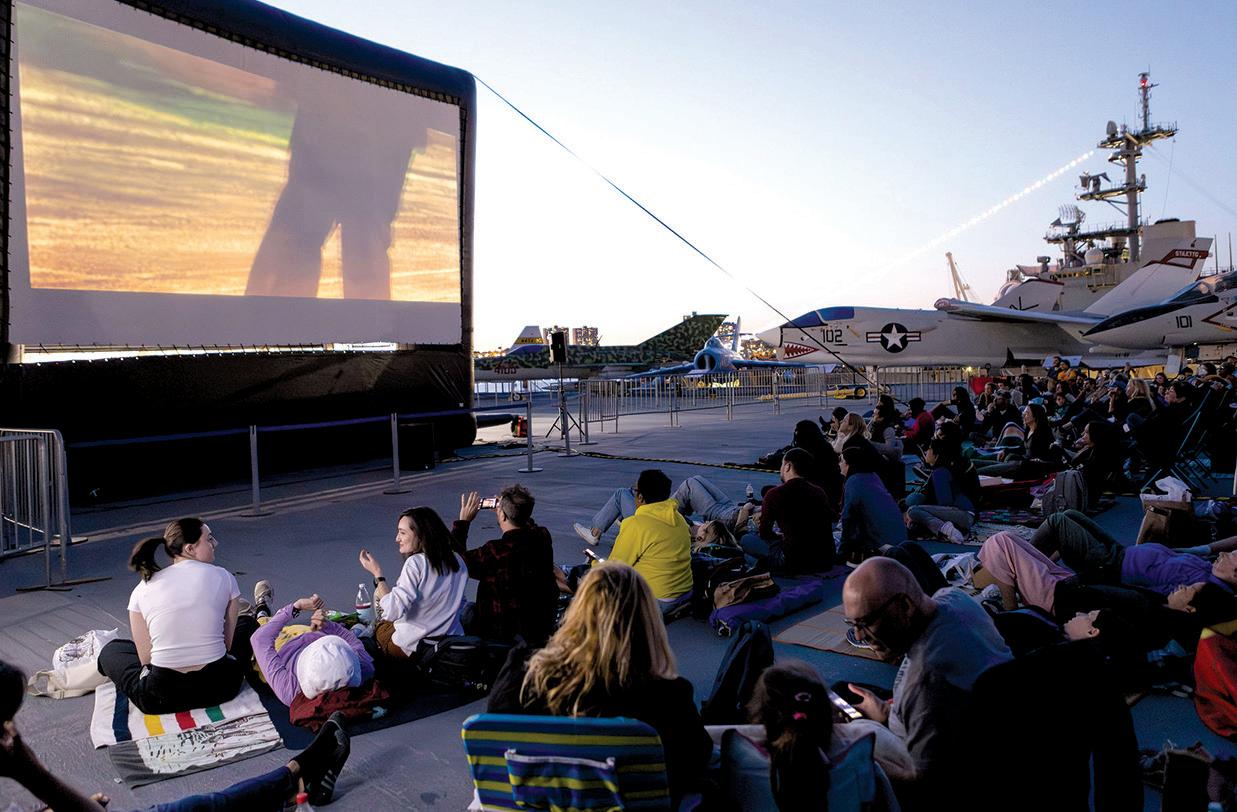
ASTRONOMY NIGHTS AND SUMMER MOVIE NIGHTS
Starting April 25
Free Fridays are back! The Intrepid Museum is once again extending its hours free of charge, starting Friday, April 25 from 5:00pm to 9:00pm and continuing the last Friday of every month through August.
Astronomy Night will feature fun-filled and educational experiences for the whole family, including talks from leading scientists and activities & demos led by Museum educators. Local astronomers will be on hand with their high-powered telescopes.
UPCOMING ASTRONOMY NIGHTS:
April 25 with ASL Intrepretation, July 25, September 26
Come to the Museum and watch a movie on the Flight Deck free of charge.
UPCOMING MOVIE NIGHT DATES
May 23: Top Gun, June 27, July 25, August 22
FLEET WEEK | May 23-26
In recognition of our men and women in uniform, activities kick off Friday, with our annual free movie night on the flight deck, featuring Top Gun. Throughout the weekend, enjoy performances and displays, activities and demos from the military, including the U.S. Marine Corps, U.S. Coast Guard, Office of Naval Research and many more! The weekend will conclude on Monday, with the Museum’s annual Memorial Day ceremony.
NEW EXHIBITION: Mysteries from the Deep Opens June 27
A fascinating new exhibition, Mysteries from the Deep: Exploring Underwater Archaeology, combines stories of submerged sites spanning 12,000 years of history with a hands-on look at the researchers and cutting-edge technologies that uncover them.
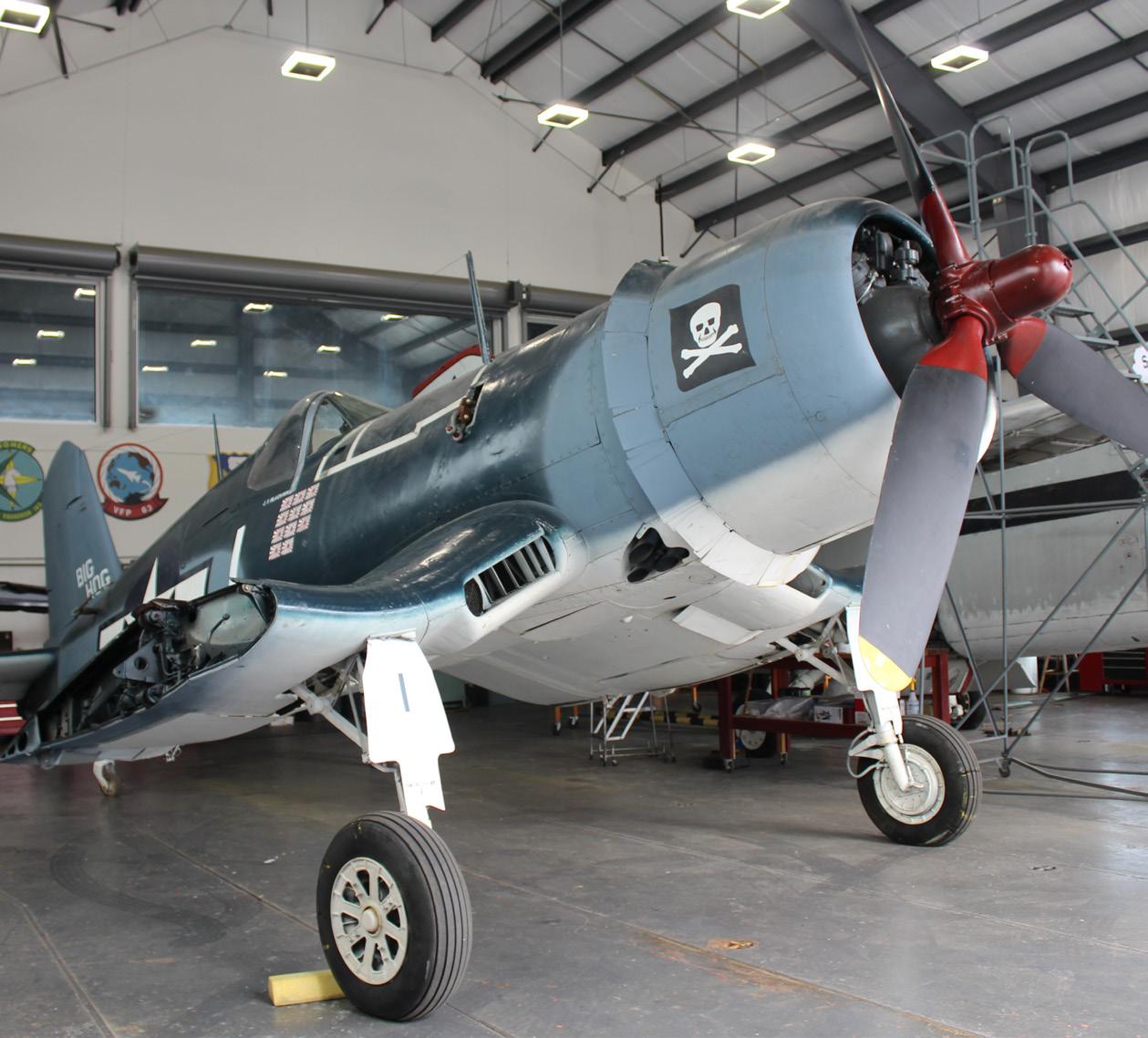

In October 2024, the Intrepid Museum accepted an icon of WWII aviation into its collection: an FG-1D Corsair fighter. The Corsair is the 2nd WWII aircraft in the Museum’s collection, joining the TBM-3E Avenger torpedo bomber. Introduced in 1942, the Voughtdesigned Corsair eventually made its way to the flight decks of aircraft carriers in 1943.
While the plane’s design—including its extended nose and unique inverse gull wing—initially made it difficult to land on flight decks, after some modifications the Corsair earned a reputation as an outstanding aircraft both ashore and with the fleet.
The Corsair became Intrepid ’s primary fighter aircraft in 1945. By the spring, Corsairs dominated the skies over the Pacific Ocean. They were not only excellent fighters but also effective ground attack platforms.
This versatility made the Corsair one of the Navy’s first designated multi-role aircraft. The Corsair’s operational career continued into the Korean War. Eventually, though, the advent of the jet age meant the end of the Corsair’s active service. It was replaced by aircraft such as the F4D Skyray and the A-1 Skyraider, examples of which are on display today on Intrepid ’s flight deck.
By weaving together narratives of aviators who made the ultimate sacrifice, oral histories of Intrepid Corsair pilots and other archival information, Final Flight and Corsair will provide visitors with an immersive, engaging look at a range of individuals who served in the Pacific during World War II.
Programs for learners of all ages and abilities will highlight the connection between Corsair’s innovative design and its record-setting performance. The plane’s iconic inverted gull wing, massive propeller and other features will provide visual reference for fundamental concepts in aerospace science and engineering.

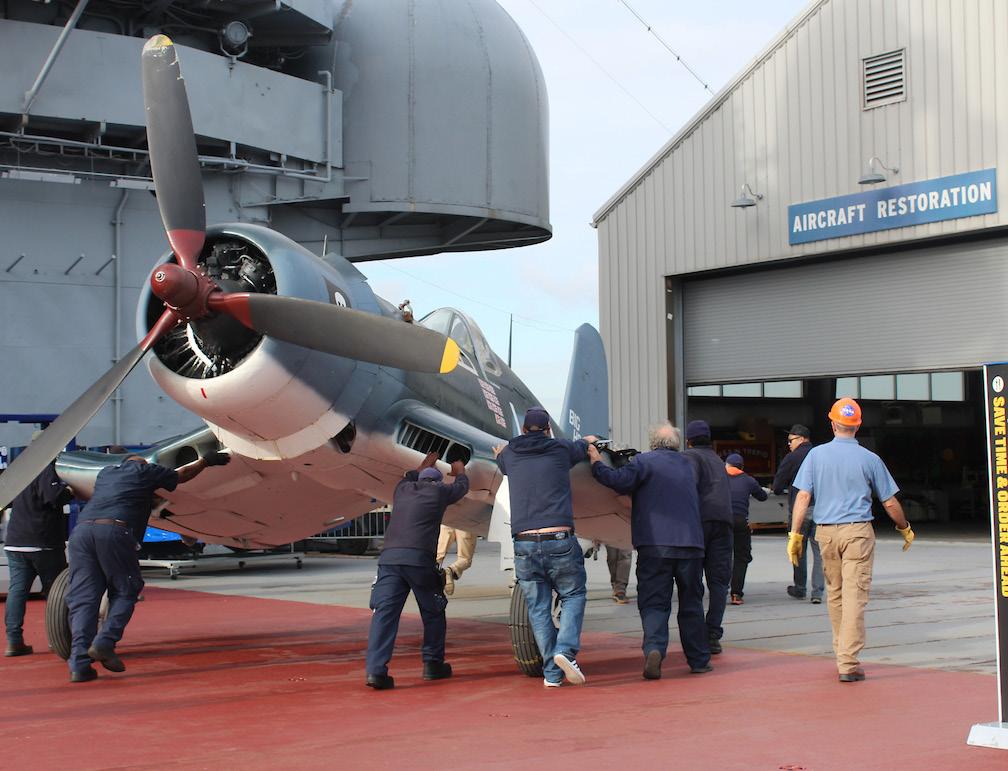
The opportunity to serve as home for this iconic aircraft came about thanks to the Museum’s reputation for excellence in exhibition design. According to Danielle Swanson, the Museum’s Director of Collections, “We were approached in February 2024 by the National Naval Aviation Museum in Pensacola, FL regarding a temporary home for this Corsair, which was previously on display at the National Museum of the U.S. Navy. The National Naval Aviation Museum was very impressed with our Final Flight exhibition and made the Intrepid Museum their first choice to serve as caretaker of this incredible machine. We are beyond thrilled to add this aircraft to our one-of-a-kind collection and look forward to introducing it to the public in March 2025.”
The plane is currently undergoing restoration and preservation treatment in the Museum’s Aircraft Restoration Hangar, where it will be repainted with the markings of a Corsair flown by Intrepid aviator Alfred Lerch. Once this process is complete, Intrepid’s hangar deck will undergo a major transformation so that Corsair can greet visitors as one of the first exhibitions they see when they come aboard ship.
The transformation of Hangar 1 is the exhibition’s first refresh since 2008, providing an opportunity to leverage dynamic storytelling methods including animations, interactives, tactile elements and never-before-seen artifacts. Corsair will showcase the intersection of history and innovation, keeping the past relevant for generations to come.

I began volunteering at the Intrepid Museum because Intrepid is a powerful symbol of the importance of service to our country. As a 17-year-old, I dreamed of attending the Naval Academy, but I couldn’t get past my parents! Now, as a volunteer working in the Aircraft Restoration Hangar and with IT at the Museum, I am finally doing something on a ship. I’m happy to play a role taking care of Intrepid and preserving its storied history for future generations.
In addition to volunteering, I also advance the Museum’s mission as a donor. Most recently, I contributed towards the Museum’s FG-1D Corsair exhibition. As an iconic World War II Navy fighter, the restoration of this Corsair is a fitting tribute to the naval aviators who fought for our country—not just famous figures like Butch O’Hare, but also men like Alfred Lerch, who defended Intrepid from kamikaze attacks in April 1945, and Loren Isley, an Intrepid aviator whose first strike was sadly his last. These stories are being preserved and shared thanks to Corsair and the Museum’s Final Flight exhibition.
When I am on the ship, I can see how young visitors— including many school children—are inspired by this history and STEM innovations the Intrepid Museum promotes through its immersive exhibitions. I know Corsair will enhance the Museum’s ability to tell these stories and advance its mission. I hope my experience inspires you to support the Museum’s Corsair exhibition as well.
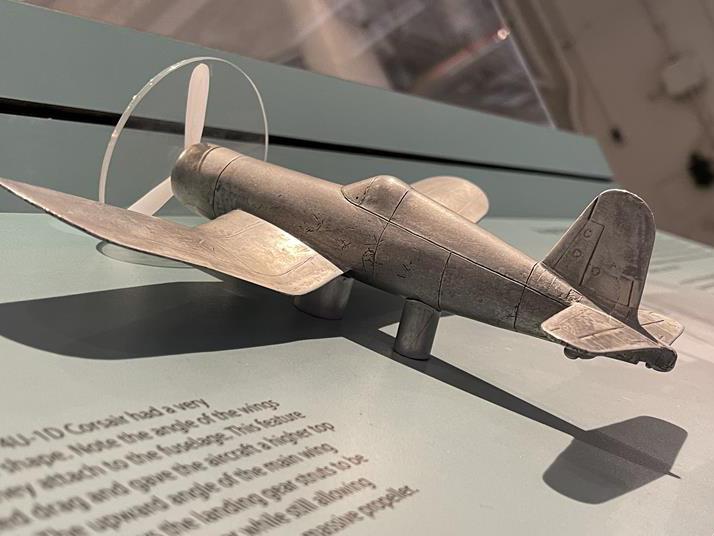
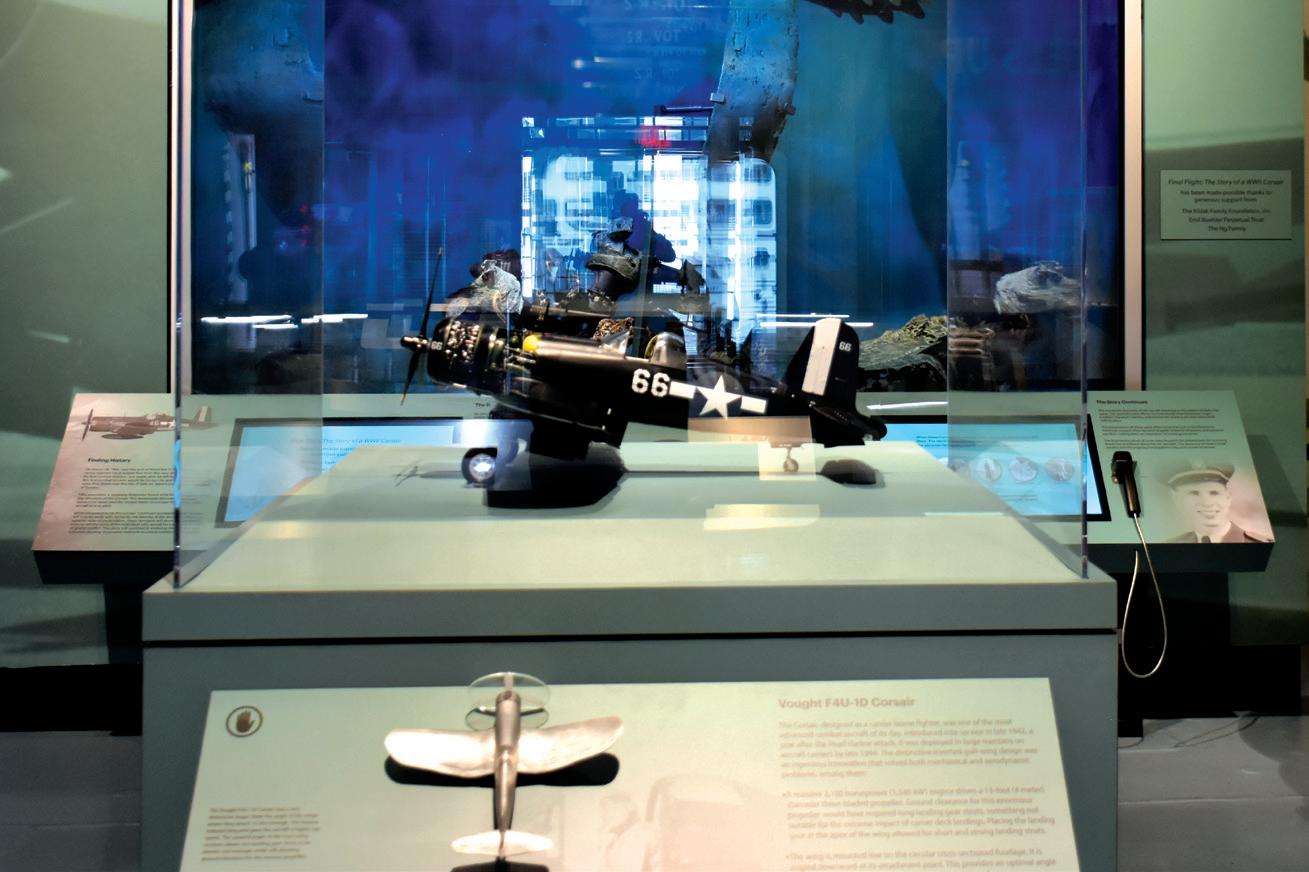
of scale models to accompany key aircraft in the Museum’s collection. One such model is already installed in the Final Flight exhibition to provide a sense of the unique design of the WWII-era FG-1D Corsair fighter.
Yet many of the Museum’s most iconic aircraft are still literally out of reach to visitors who are blind or have low vision. This population represents 6% of visitors in special programs and tours offered by the access team. Since the CDC estimates over 7 million Americans have vision loss or blindness, it is safe to say many of our daily visitors experience these same challenges.
Touch is one of the principal ways we interact with and learn from our environment. It is especially important when we cannot see objects around us. For individuals who are blind or have low vision, this poses an especial problem at cultural institutions such as museums, which actively discourage touch in order to protect objects on display. Fortunately, the Intrepid Museum’s access team is at the forefront of developing multi-sensory strategies that simultaneously protect our artifacts and advance access for all.
Thanks to a grant from the Robert & Toni Bader Charitable Foundation, the Museum is expanding tactile engagement for visitors of all ages and abilities. This grant will help fund the development and production
Over the course of this two-year project, scale models of some of the Museum’s most popular and historically significant aircraft, including the F-14 Tomcat, A-12 spy plane, British Airways Concorde and space shuttle Enterprise will be designed in-house with guidance and feedback from a group of self-advocates who are blind or have low vision. An outside firm will cast the models, and after installation with updated signage and enhanced audio descriptions, their efficacy as a learning and experiential aid will be evaluated through observations and visitor surveys.
This grant is only the start of a broader effort to create tactile models for the majority of the Museum’s aircraft collection. Additional funds are needed to expand this project. If you are interested in helping advance accessibility and educational opportunities for individuals who are blind or have low vision, please contact Amanda Catherall at acatherall@intrepidmuseum.org.
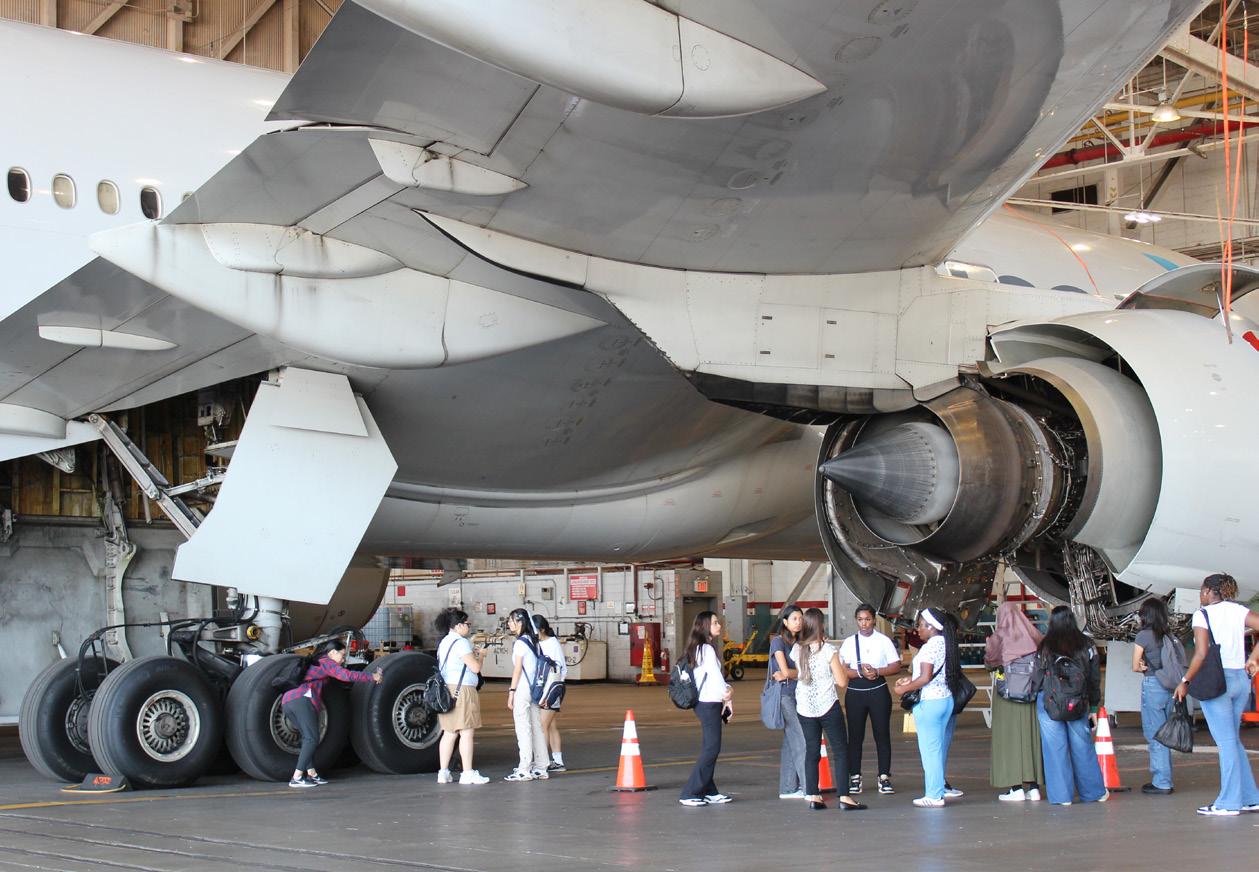
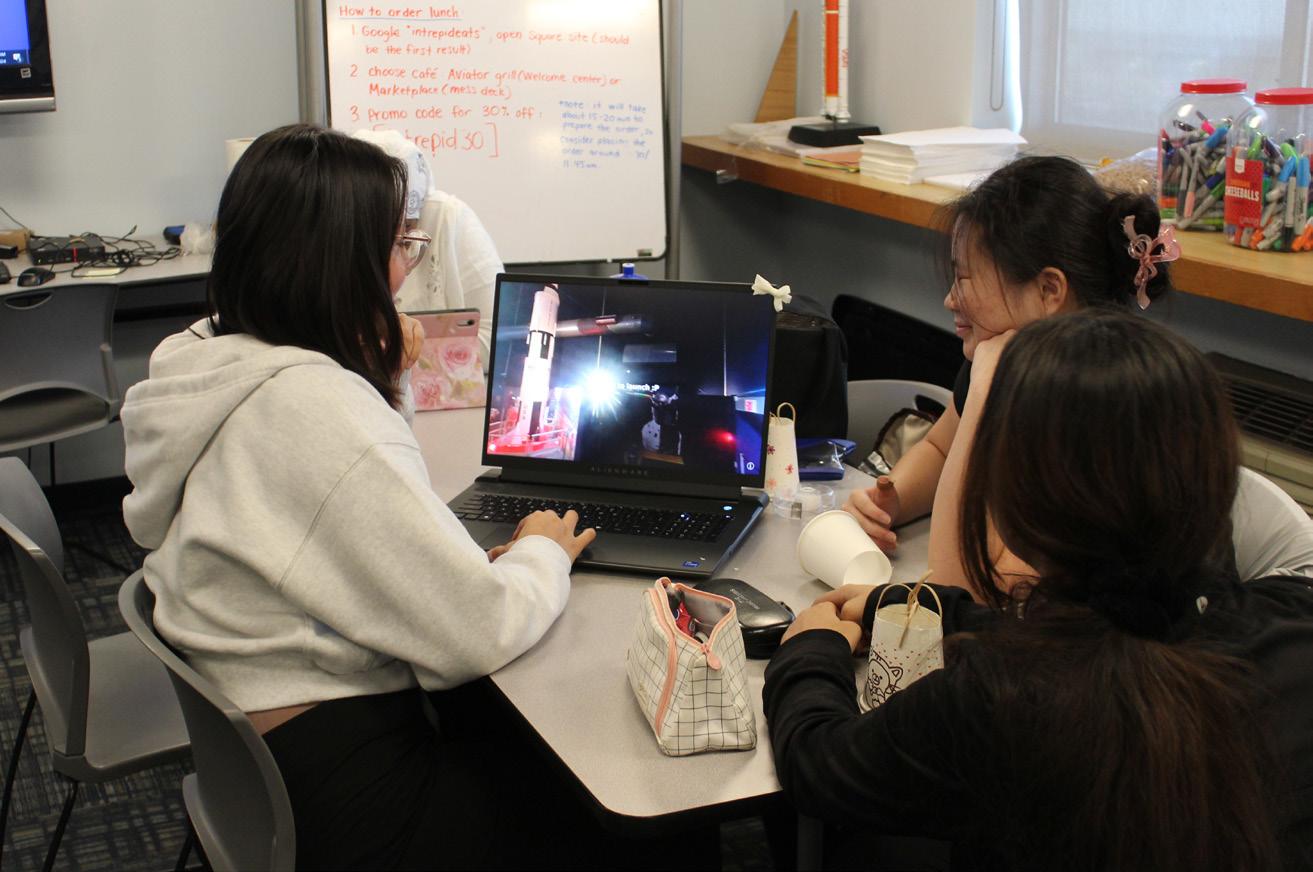
As a paid opportunity, participants were fully immersed in an environment highlighting the interdisciplinary STEM behind the aviation and spaceflight industries. The participants also developed 21st century workplace skills like collaboration, communication and iterative design. They were tasked with delivering four major design projects: an aircraft design, space habitat design, creating a digital resume in the form of a mobile app, and an AR/VR walkthrough of aerospace-related collections in the Museum.
NYC DYCD Commissioner Keith Howard visited the Museum in July 2024 to observe the program in action. After watching participants take part in experiments to design environmentally friendly propellants for aerospace applications, Commissioner Howard said, “This is one of the best programs I have seen so far.” Exposure to positive role models actively inspires girls and young women, providing them with a roadmap to high-growth aerospace careers.
In January of 2024, the Intrepid Museum proudly built on over 15 years of experience promoting gender equity through STEM education programs for girls and young women by becoming a founding member of Women Forward NYC: An Action Plan for Gender Equity.
For the first time, through a collaboration with the New York City Department of Youth and Community Development (DYCD), the Museum’s summer program for girls was not only free but the participants were paid for 150 hours of work/study experience. Twenty-five young women took part in the program, which provided hands-on experiences related to aerospace industries where girls and women have historically been excluded.
“Mentorship Mornings” played a critical role inspiring Techs of Tomorrow participants with firsthand accounts of women working across a wide spectrum of aerospace careers. On these mornings, the Techs of Tomorrow met panels of mentors including astrophysics professors, Federal Aviation Administration specialists, aerospace engineers and NASA ambassadors, among others.
The program culminated with participants creating 360° augmented and virtual reality (AR/VR) presentations using Present4D. This project challenged participants to research the Museum’s collections, drawing connections between aerospace technologies within their recorded environments and throughout the larger Museum complex.
One Intrepid Square W. 46th Street & 12th Avenue, New York, NY 10036-4103
While it is always exciting to welcome new aircraft into the Museum’s collection, it is even better when we can tell the stories of the men that flew off Intrepid. In the case of our newly arrived FG-1D Corsair, we are highlighting fighter pilot Lt.(jg) Alfred Lerch.
Born in Pennsylvania, Alfred Lerch enlisted in the Naval Reserve in 1942, shortly after the United Stated entered World War II. After becoming a naval aviator in 1944, Lerch came aboard Intrepid as part of Fighting Squadron 10 (VF-10), a unit flying Corsair aircraft, in early 1945.
On April 16, 1945, Lerch shot down seven Japanese aircraft, making him an ace-in-a-day. He was awarded the Navy Cross for his actions in the skies that day. Our Corsair will be painted to represent the plane that Alfred Lerch flew during this mission. The vertical stripe tail marking on this Corsair may look simple, but it played an important role during WWII.
ON THE COVER

